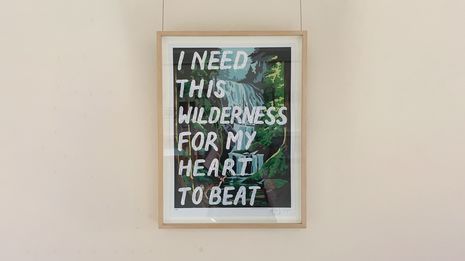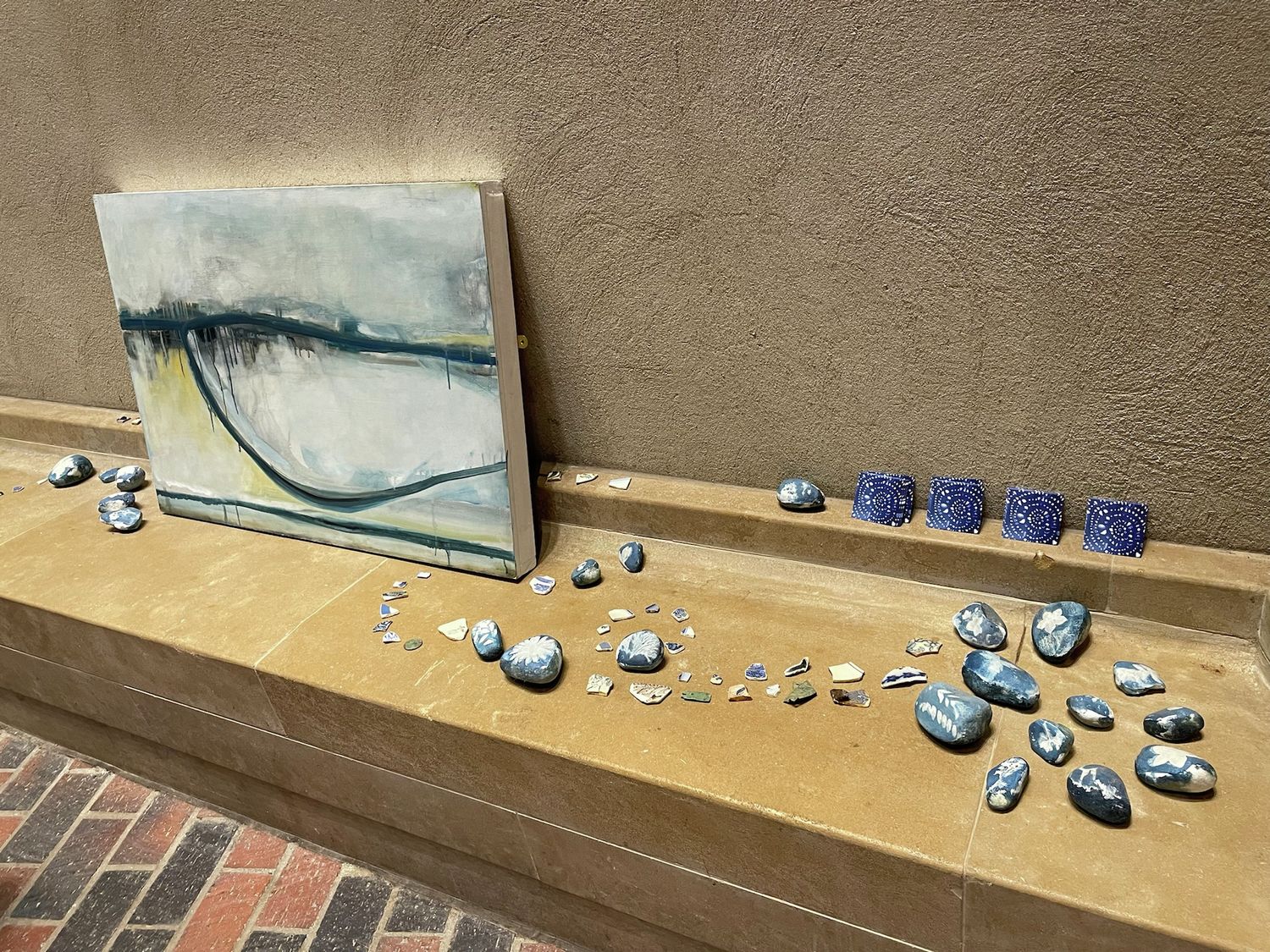Unpacking anthropocentrism in medicine and beyond: Kill or Cure
The ongoing exhibition at Wolfson College raises pertinent questions about the relationships between nature and the human race, writes Gabriel Humphreys

As the title suggests, the Kill or Cure exhibition explores the potential of elements of the natural world – plants, animals, and substances – to do us harm, or to bring us healing. The collection of works spreads across a number of rooms in Wolfson College and promises a “treasure trove of ideas and visual responses”. It doesn’t disappoint: despite the relatively limited exhibition space, diverse interpretations of the underlying theme abound.
Having such a specific but polyvalent focus has allowed artists to choose their own paths with minimal restriction, and different approaches flourish. Pieces also feel well curated considering these differences, some coming together in reflective synergy, while others address disparate aspects of the theme. Both approaches work to make the works greater than the sum of their parts, providing complement or contrast to their individual subject matter.
“The works seek to challenge the accepted image of plants as catatonic, lifeless objects”
The exhibition was initiated from an open call, and responses came from all over the world, with most works being created specifically for the exhibition by a wide range of artists. As might be expected, there is a broad spectrum of different styles, mediums, and qualities. This is sometimes particularly apparent – pieces range from the abstract and thoughtful, to the occasionally heavy-handed and unrefined. Overall, however, these very literal interpretations are few and far between, and nevertheless contain interesting meditations on the theme.
Fundamentally, this is an exhibition about how the natural world has illuminated and remodelled the realm of the medical sciences, but the subjective and personal responses to the prompt make sure that the collection as a whole never becomes dry or unengaging. Because of its subject matter, the exhibition necessarily focuses on the binary between the human and the natural, but refrains from forcing a certain definition thereof upon the visitor, preferring instead to provoke reflection.
“Prejudice has shaped the normalisation of practice and product”
Many works take plants as their site of analysis, and far from placing the human above the natural, these works seek to challenge the accepted image of plants in secular Western societies as catatonic, lifeless objects, fit merely for human use. Whether it is animating traditional illustrations to breathe life into two-dimensional renderings or engaging with the beliefs of the indigenous Qom people that each plant is animated by a spirit, these works force us to reconsider plants as dynamic, living beings.
Other pieces tackle the dissonance of contemporary and traditional medicine, and the role of natural forces in each. As our healthcare systems have developed, we have become more and more alienated from the natural systems which inform and power them. It’s easy to forget that aspirin is derived from willow leaves, or that morphine derives from the opium poppy.
We have sanitised and streamlined every substance and process, until we’re mass producing something that used to have to be ground, distilled and titrated by hand. Although these changes ensure efficiency in treatment, and have undoubtedly transformed and saved lives, they nevertheless alienate us from their natural origins, and allow us to remain in comfortable ignorance of the power of nature all around us.
“Care and damage run in both directions”
Moreover, as industrialisation has set in, many traditional medical practices from indigenous or simply non-white cultures have been systematically delegitimised over the course of centuries. Being forced to remember and confront these disguised connections can help us remember that our place is as part of a wider ecosystem, and help us not to forget that even in systems like healthcare, prejudice has shaped the normalisation of practice and product.
This exhibition aims to expose the power of plants, animals and substances from the natural world to “kill” or to “cure”. In doing so, it raises questions about the boundary between the human and natural worlds, and the overwhelming takeaway for me was the role and importance of reciprocity. The exhibition’s theme, “Kill or Cure”, is a dichotomy that applies not just to nature’s power over us, but also the power of humans over nature. Care and damage run in both directions. It is too easy to think of the human race as separate from the natural world – after all this approach has been the driving force in our culture, economics and politics for centuries. This collection of works pushes us to ask challenging and ultimately rewarding questions about that assumption and its ramifications, and encourages us to perhaps foster a more relational, two-sided view.
This is a perfect exhibition if you have a background or interest in medicine, pharmacology or plant science, but its appeal is so much broader. With the ongoing strain that we have placed on the planet threatening multiple simultaneous environmental collapses, and possibly the ability of the planet to sustain human life as we know it, the place of the human race in the natural world is a question demanding an urgent answer.
The Kill of Cure exhibition is open Saturdays & Sundays, 10am-5pm, until 9th October 2022 at Wolfson College.
 News / Cambridge academics stand out in King’s 2026 Honours List2 January 2026
News / Cambridge academics stand out in King’s 2026 Honours List2 January 2026 Interviews / You don’t need to peak at Cambridge, says Robin Harding31 December 2025
Interviews / You don’t need to peak at Cambridge, says Robin Harding31 December 2025 Comment / What happened to men at Cambridge?31 December 2025
Comment / What happened to men at Cambridge?31 December 2025 News / Varsity’s biggest stories of 202531 December 2025
News / Varsity’s biggest stories of 202531 December 2025 News / Unions protest handling of redundancies at Epidemiology Unit30 December 2025
News / Unions protest handling of redundancies at Epidemiology Unit30 December 2025











